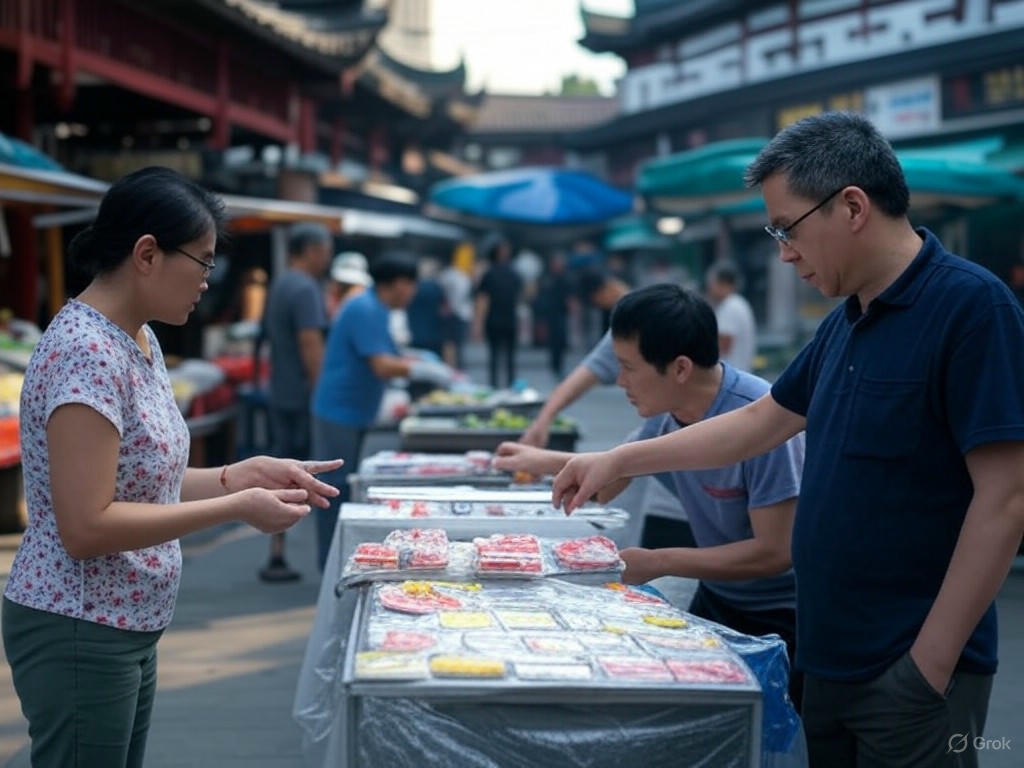China’s Economic Balancing Act: Retail Booms as Industry Faces Headwinds
China’s economy is navigating a complex landscape as recent data reveals a striking contrast between robust consumer spending and a slowdown in industrial output. Amid escalating trade tensions with the United States, the surge in retail sales has emerged as a vital lifeline for the world’s second-largest economy, offering a glimmer of hope against a backdrop of uncertainty.
The latest figures paint a picture of resilience among Chinese consumers, who are driving economic activity despite external pressures. Retail sales have seen a significant uptick, fueled by a growing middle class and increased demand for goods ranging from electronics to luxury items. This consumer confidence stands out as a critical buffer, especially as higher U.S. tariffs continue to weigh heavily on export-driven sectors. Analysts suggest that this spending spree reflects a shift in domestic priorities, with households focusing on personal consumption rather than saving amid global economic volatility. E-commerce platforms have also played a pivotal role, with online shopping festivals boosting sales and sustaining momentum in the retail sector. This trend underscores a broader transformation in China’s economic model, gradually pivoting from heavy reliance on manufacturing and exports to a more consumer-centric framework.
However, the industrial sector tells a different story. Growth in manufacturing and factory output has decelerated, hampered by disrupted supply chains and shrinking export markets due to the ongoing trade war. Industries that once thrived on international demand are now grappling with reduced orders and rising costs, as tariffs imposed by the U.S. bite into profit margins. This slowdown has raised concerns about job stability in manufacturing hubs, where millions depend on factory work for their livelihoods. While the government has rolled out stimulus measures, including tax cuts and infrastructure investments, the impact on industrial recovery remains uncertain. Experts warn that prolonged trade disputes could further erode industrial competitiveness, potentially offsetting the gains made in retail.
Looking ahead, China faces the dual challenge of sustaining consumer momentum while revitalizing its industrial base. Policymakers are likely to double down on initiatives that encourage domestic spending, such as subsidies for green energy products and incentives for rural consumers. At the same time, diplomatic efforts to ease trade tensions could provide much-needed relief for exporters. Some economists argue that this economic divergence—between thriving retail and struggling industry—might accelerate structural reforms, pushing China toward a more balanced and sustainable growth path. Yet, the road ahead is fraught with risks, as global uncertainties and geopolitical frictions continue to loom large.
For now, the resilience of Chinese consumers offers a silver lining, proving that even in turbulent times, domestic demand can anchor an economy under strain. As the nation recalibrates its priorities, the world watches closely to see if this retail boom can counterbalance industrial setbacks and steer China through the storm of trade war turmoil.


